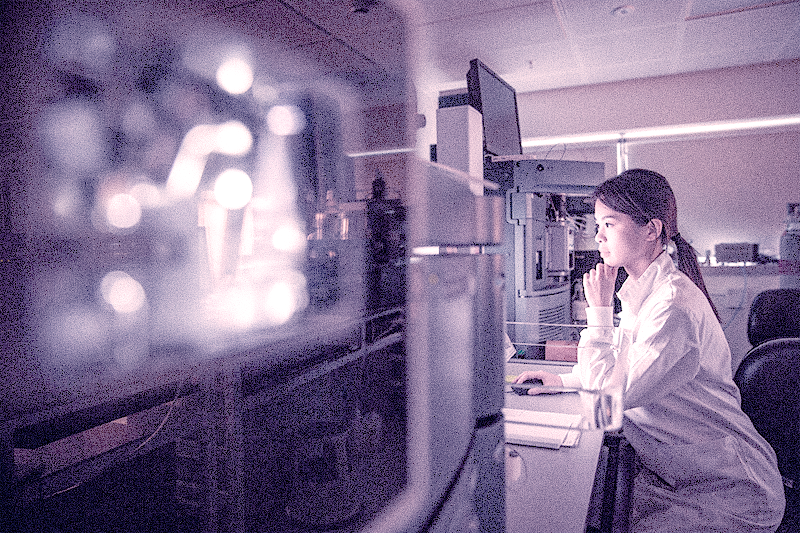
Demand for genomic services is increasing rapidly, though laboratories are currently hampered in meeting this need as the interpretation of genetic results often still relies heavily on labor-intensive processes that can only be completed by highly trained geneticists. While genetic scientists and physicians take many years to train, implementing a decision support platform that enables them to identify actionable insights and make decisions 20x faster takes only a handful of days!
Across Europe there are fewer than 400 European registered Clinical Laboratory Geneticists (ErCLG) [1]. This makes hiring new staff incredibly difficult – and training them is prohibitively time-consuming. To ensure patient safety, the European Board of Medical Genetics (EBMG) has developed a set of standards and a curriculum that recommends very strongly that ErCLGs should undergo training and education that normally takes 5 years to complete. In the United States, a physician must complete specialized training before residency as specified by the Member Board to become certified in a particular area of Medical Genetics and Genomics. Specialty training required prior to certification by the American Board of Medical Genetics and Genomics takes two to three years [2].
The true and complete costs of routine clinical grade sequencing
The “$1000 genome” has been prominently discussed as a goal to make whole genome sequencing a reality for clinical use. However, this sum only reflects the consumables part and does not account for sample processing, bioinformatic processing and interpretation. The overall cost of routine clinical grade sequencing still is much higher, as we must take into account not only consumables and equipment but – importantly – staff time and costs for interpretation and overhead.
A recent paper published in Genetics in Medicine highlighted the real costs of routine next -generation sequencing in the context of a UK NHS accredited laboratory processing around 400 samples per year [3]. For rare diseases, the authors were looking at pediatric and adult trio cases with a broad disease spectrum. As part of their standard operating procedure, the lab was first running a clinical bioinformatics analysis for each case (looking at known disease genes) and then a research, gene-agnostic analysis, in those cases that could not be solved with the first analysis. The authors collected cost data for all steps in the sequencing pathway, including interpretation and reporting, staff time and salary. The greatest cost in NGS is currently still the sequencing, but the interpretation of data is by far the most time-consuming and resource-heavy step in the process - the analysis bottleneck.
DNA extraction, library preparation, interpretation and reporting all take time and have associated costs. Genomic analysis involves multiple steps, including SNV interpretation for known genes, sequentially triggering a CNV pipeline for CNV detection and interpretation of those variants in known genes; and a gene-agnostic, broader research analysis looking at all genes in more complex cases. Although the results showed that sequencing is the most expensive part of the process, the study highlighted that due to the interpretation bottleneck, genomic analysis can be very lengthy and costly: around $9000 per trio and $3000 dollars per genome sample.
Importantly, the study also showed that clinical interpretation, even when performed by expert Clinical Scientists in leading genomic laboratories, can take up to 11 hours, even in simple rare disease cases, with complex cases taking more than 16 hours, since these require additional exploratory analysis. 70% of the analysis costs is staff time – which further highlights the intensive human-led, often manual, process that is clinical interpretation.
Breaking through the bottleneck
An analysis of more than 2000 complex cases interpreted using the Congenica platform during the UK 100,000 Genomes Project shows that complex analyses, which used to take at least 20 hours to interpret and report, can now be completed in an average of just 30 minutes. This dramatic improvement in analysis, interpretation and reporting times enables significantly higher throughput of cases and reduces interpretation costs by 95%. Watch the short video below to find out how:
If we estimate that an average of just one case per day can be analyzed and interpreted without support by specialized software like-that provided by Congenica, less than 100,000 cases can be processed across Europe each year. Considering that Genomics England has committed to sequencing 500,000 whole genomes by 2024, there is a large gap in analysis and interpretation capacity that holds promise to be closed with innovative software solutions.
For this reason, Genomics England selected Congenica as its exclusive decision support platform for the analysis of rare disease cases, ahead of 15 other solution providers, taking into consideration a robust set of criteria against which each solution was rigourously assessed:
- Efficiency
- Scalability
- Usability
- Clinical accuracy
- Case throughput
- Commercial value
You are leaving money on the table if you are not scaling your analysis and interpretation workflow
The interpretation bottleneck limits a genomic service’s ability to scale up. It is therefore crucial that genetic analysis platforms can scale to meet the extreme demands of analyzing large volumes of data and to accommodate the explosion in genomic analysis. Congenica has been developed with scalability in mind. Its secondary analysis pipeline is capable of ingesting data from multiple whole genomes, exomes and panels using a powerful parallel cloud processing approach.
Furthermore, the time and cost savings achieved by industry-leading genetics laboratories using Congenica dramatically outweigh the investment required to use the platform, delivering a significant return on investment and freeing up experts to focus their time on the most complex and urgent cases.
To learn more about how Congenica can help you address the genomic analysis bottleneck download our white paper:
References
[1] European Board of Medical Genetics https://www.ebmg.eu/clg.0.html
[2] American Board of Medical Genetics and Genomics https://www.abms.org/member-boards/contact-an-abms-member-board/american-board-of-medical-genetics-and-genomics/
[3] Schwarze, K. et al. (2019). The complete costs of genome sequencing: a microcosting study in cancer and rare diseases from a single center in the United Kingdom. Genetics in Medicine (PMID: 31358947)


.png?width=320&height=192&name=Untitled%20design%20(8).png)
.png?width=320&height=192&name=Since%202016%2c%20the%20number%20of%20women%20working%20in%20STEM%20fields%20in%20the%20UK%20has%20increased%20by%20216%2c552%2c%20taking%20the%20total%20number%20over%20the%201%20million%20mark%20for%20the%20first%20time.%20Women%20now%20make%20up%2024%25%20of%20the%20STEM%20workforce%20i%20(2).png)
-1.png?width=320&height=192&name=Deciphering%20Developmental%20Disorders%20(1)-1.png)